On 2 June, BBC Sky at Night Magazine writer Pete Lawrence photographed an image of Venus’s atmospheric ring, and his picture featured as NASA’s Astronomy Picture of the Day on 8 June. One of only a handful of astrophotographers to have achieved this image, here he explains how he caught the event.
Venus was well positioned in the evening sky in the early part of 2020, as it moved towards a close inferior conjunction – that point in Venus’s orbit when it appears to line up with the Sun – on 3 June. In the weeks approaching inferior conjunction, Venus appears as an ever-thinning crescent through the eyepiece of a telescope. Its apparent size increases as its phase decreases and in the final days before inferior conjunction, something unusual happens to it.
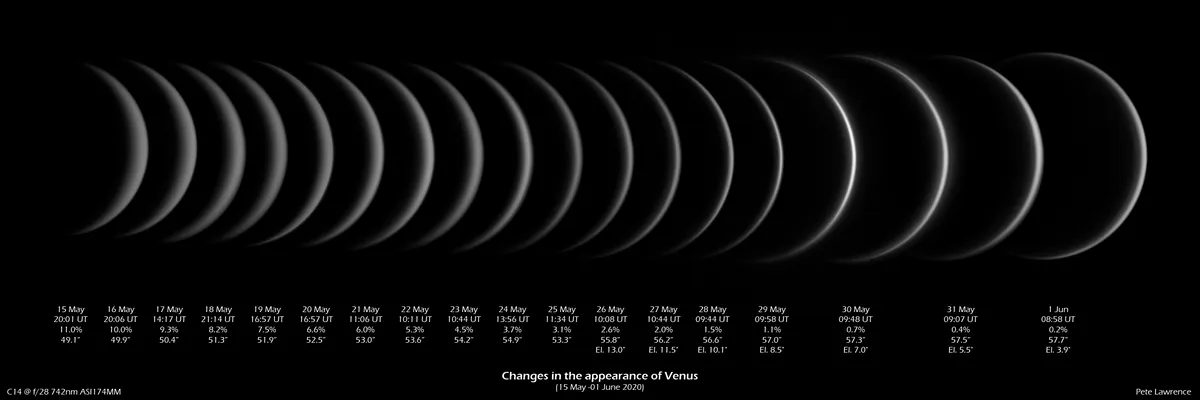
As the separation from the Sun drops below 10º, the pointed crescent cusps slowly extend around the edge of the planet. Eventually, at around the 3º solar-separation mark, they join up to form a complete ring – At first, the ‘cusp-bridge’ is very faint, but it brightens as the planet appears to get closer to the Sun, until you are presented with a complete ring around Venus. This is Venus’s atmospheric ring – caused by sunlight refracting through the planet’s thick atmosphere.
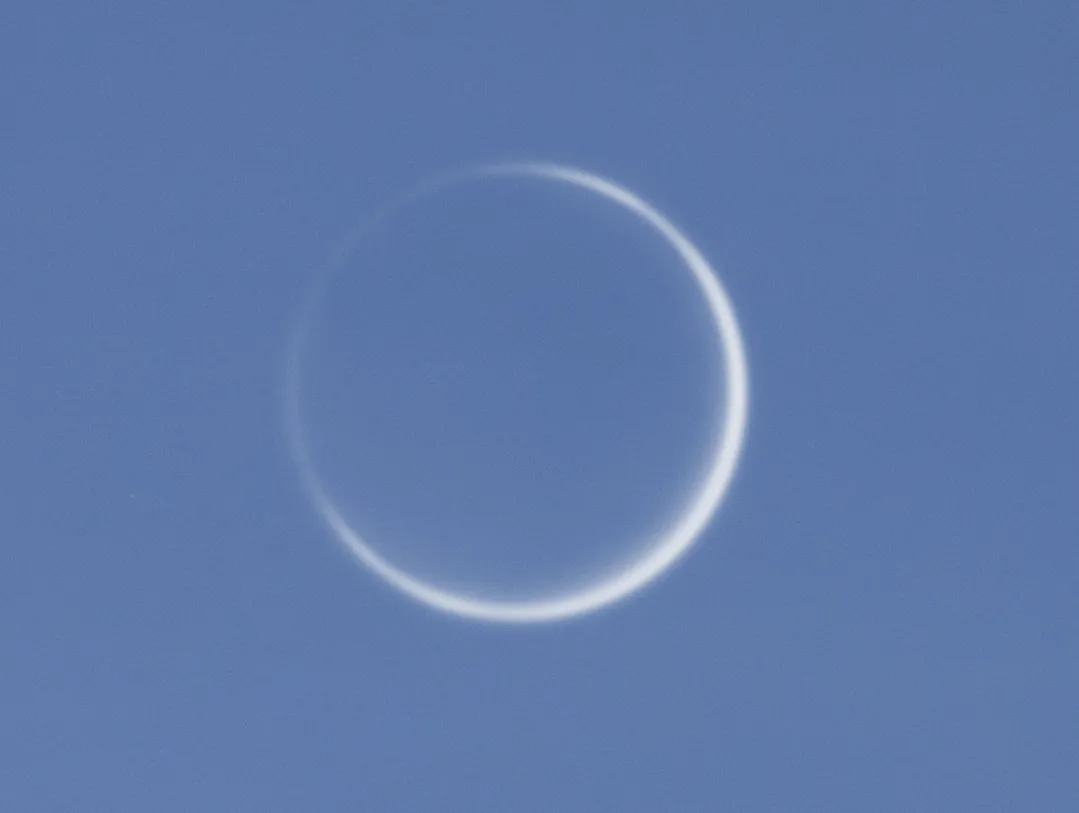
It’s an effect that has held a long fascination for me. When I was at school, I recall seeing a photograph of Venus taken near inferior conjunction. The photograph was taken by James W Young at the Table Mountain Observatory, California on 20 June 1964, and it has really inspired me to try challange my astrophotography skills and recreate it ever since.
Venus transit - the ultimate inferior conjunction
Venus goes through inferior conjunction every 584 days. In 2020 it passed just one-quarter of a degree north of the Sun’s northern limb, but some inferior conjunctions aren’t this close, and others are closer still. In 2004 and 2012 we got the ultimate in close passes, a transit of Venus – with the planet passing in front of the Sun’s disc. These are rare events – the next one won’t take place until December 2117!
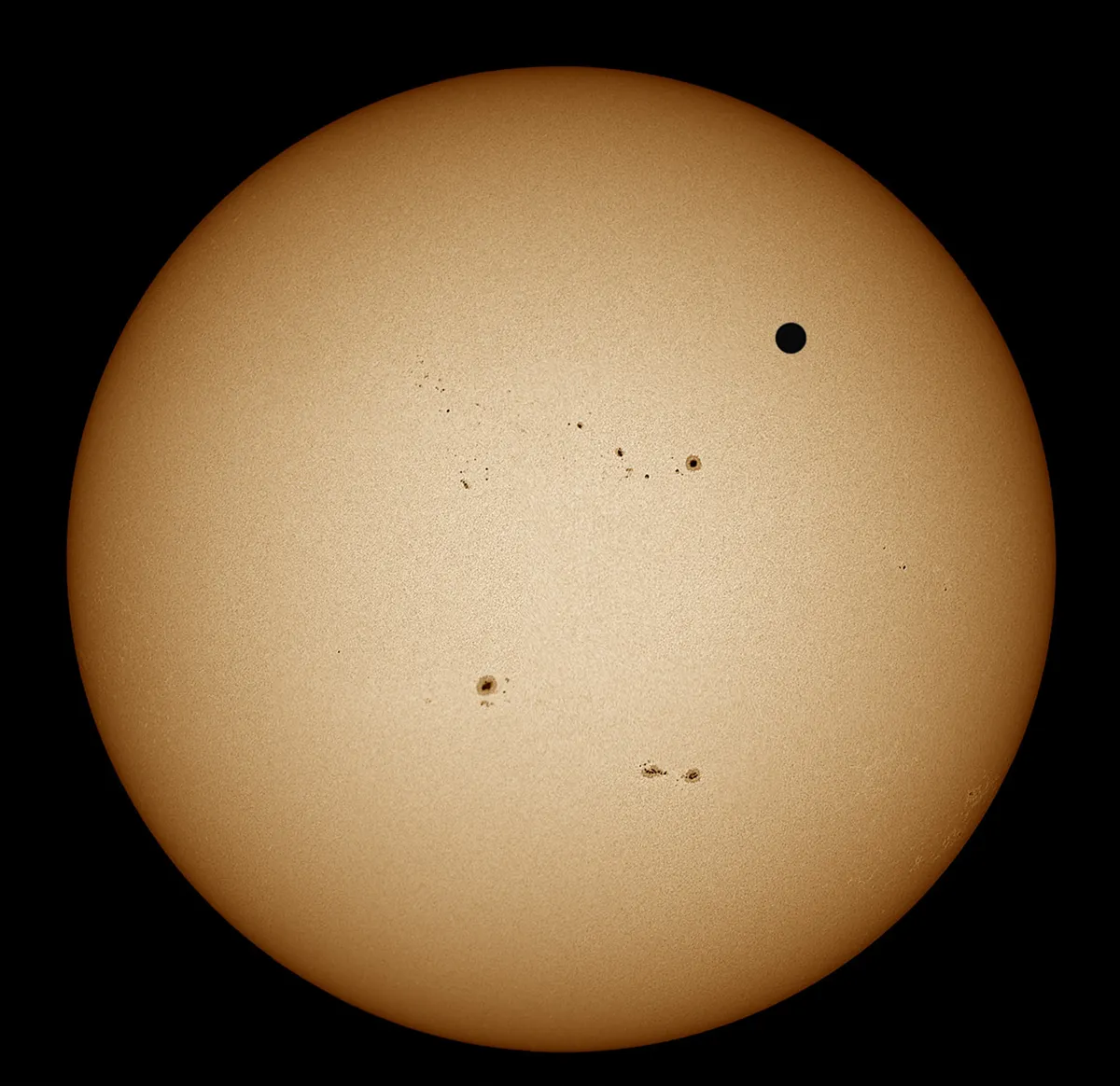
In 2004, I used a 4-inch refractor with a DSLR to hunt Venus the day before the transit. The process involved applying a solar filter and centring the scope on the Sun’s disc. The finder was solar filtered too. Knowing how many degrees away from the Sun the planet lay, I was able use the 0.5º apparent diameter of the Sun as a ruler and offset my position to where Venus should have been. Once positioned, I carefully removed the solar filter, ensuring the Sun wasn't straying into my telescope's view as you should never look directly at the Sun, and took a series of bracketed exposures of the sky. I examined each shot looking for the cusp-extended crescent. Eventually I found it and an almost complete atmospheric ring was photographed, but not quite the full ring I'd hoped for.
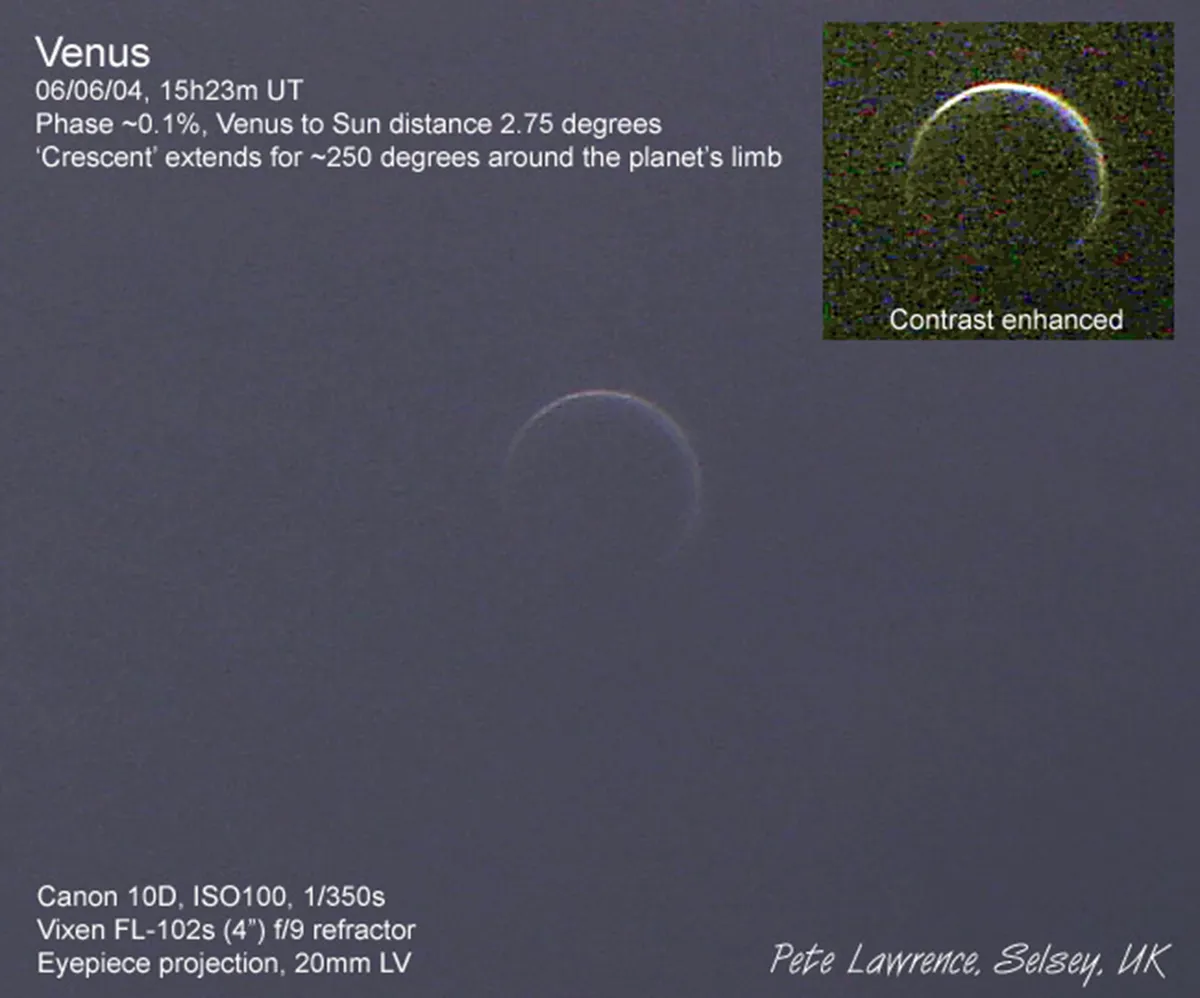
For the 2012 transit I was in Svalbard with the Sky at Night team. Chris Lintott and Lucie Green were filming at the Eiscat auroral research facility on the archipelago the day before the transit. This left me with an afternoon to try and locate Venus and its extended cusps once again. For this I set up my trusty 4-inch scope outside the accommodation block where we were staying. The area I chose had a gravel surface and I can remember it being very painful on the knees.
I put a large black cloth over my head and watched the output from a planetary camera on a laptop screen. Eventually I found Venus and with the ability to capture many frames of the planet, was finally able to reveal the full atmospheric ring, albeit a rather grainy version, as I’d seen in James Young’s 1964 photograph. I particularly remember giving a muted cheer at this point while still under my observing shroud. I subsequently noticed a number of feet surrounding me, perplexed by what was happening under the cloth!
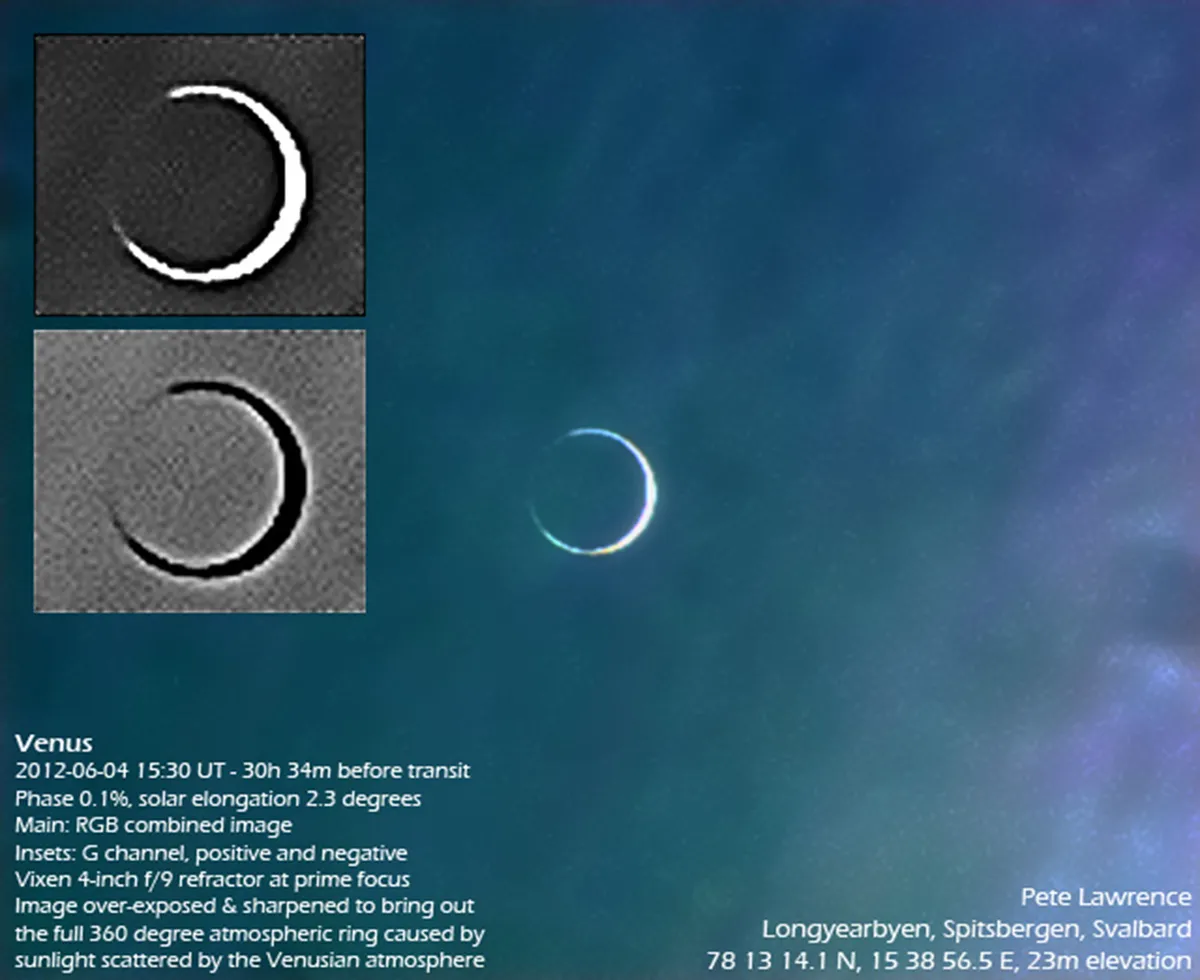
Capturing Venus’s atmospheric ring in 2020
The 2020 evening apparition of Venus in the first half of 2020 was a superb opportunity to capture views of this beautiful, cloud-covered world. The main observing period coincided with the world being in the grip of the Covid-19 pandemic. While under lockdown, Venus provided a celestial distraction many could enjoy and remarkably, the weather throughout May until 2 June remained superb!
I was able to maintain a daily imaging sequence using my 14-inch SCT right from 4 May. As the end of the month approached, the Sun started creeping down the front of the telescope and a sun-shield was required - remember, you should never look directly at the Sun, and should take precautions not to do so accidentally when observing a Sun-neighbouring sight such as Venus.. My method was a little Heath-Robinson: a loose-fitting strong cardboard sleeve around the scope’s tube, taped all the way round.
Using the long side of a telescope delivery box, I cut a 1.5m sun-shade which slipped into the card sleeve, projecting forward of the scope. Additional top shielding was employed to extend the shadow across the scope’s front aperture at the end of May and on 1 June. However, breezy weather meant that the sail-like shield wasn’t holding its required precision.
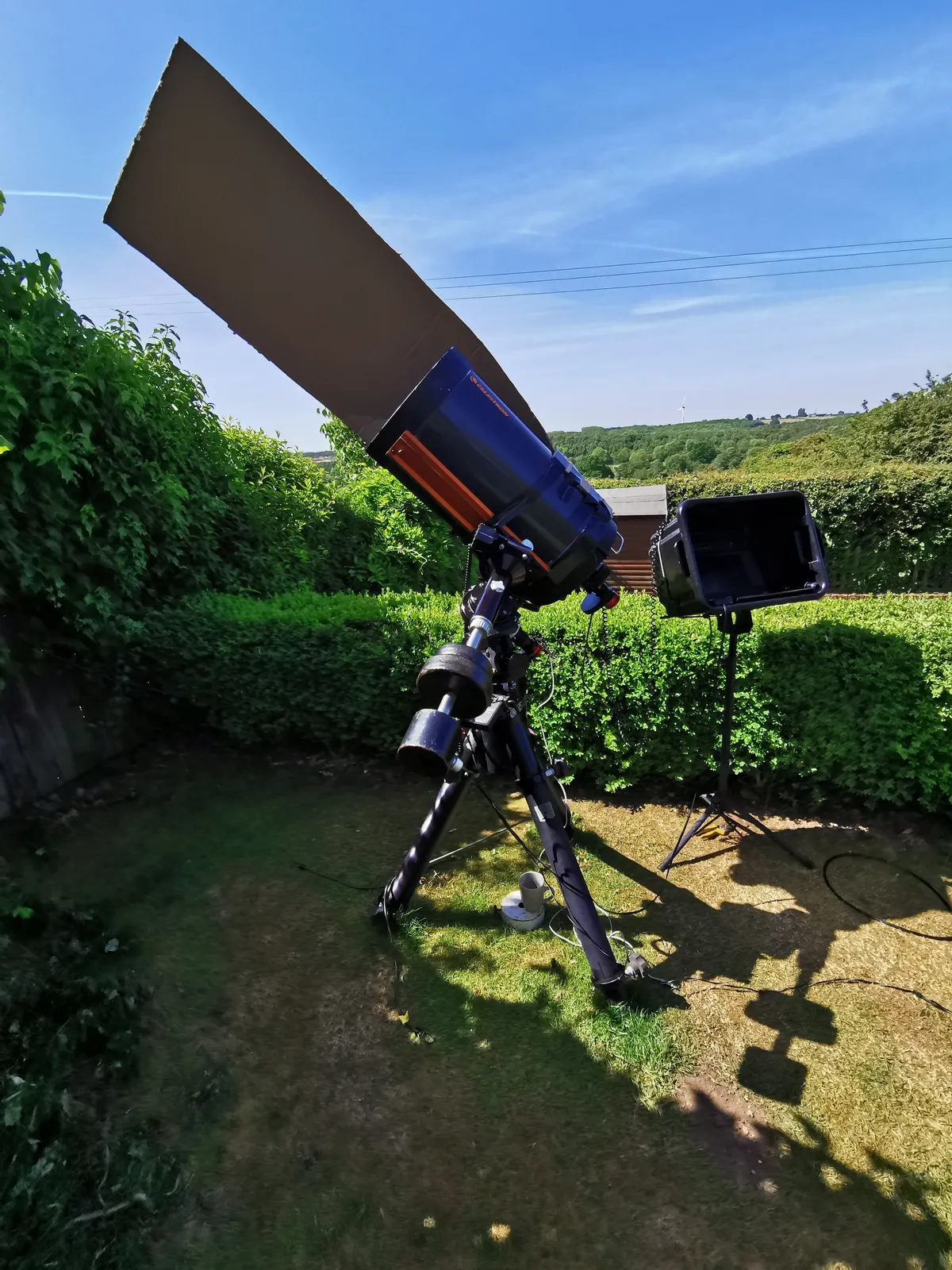
On 1 June, I decided to switch to using my 4-inch refractor. A length of strong card was taped to the dew shield of the scope which could be unscrewed slightly to adjust the shield orientation for maximum effect. A square piece of card with a circular hole was attached to the top of the shield for further protection. The scope remained capped until it was needed. When the cap was removed a visual check was made to ensure that sunlight wasn’t entering the eyepiece end of the tube where my camera was positioned.
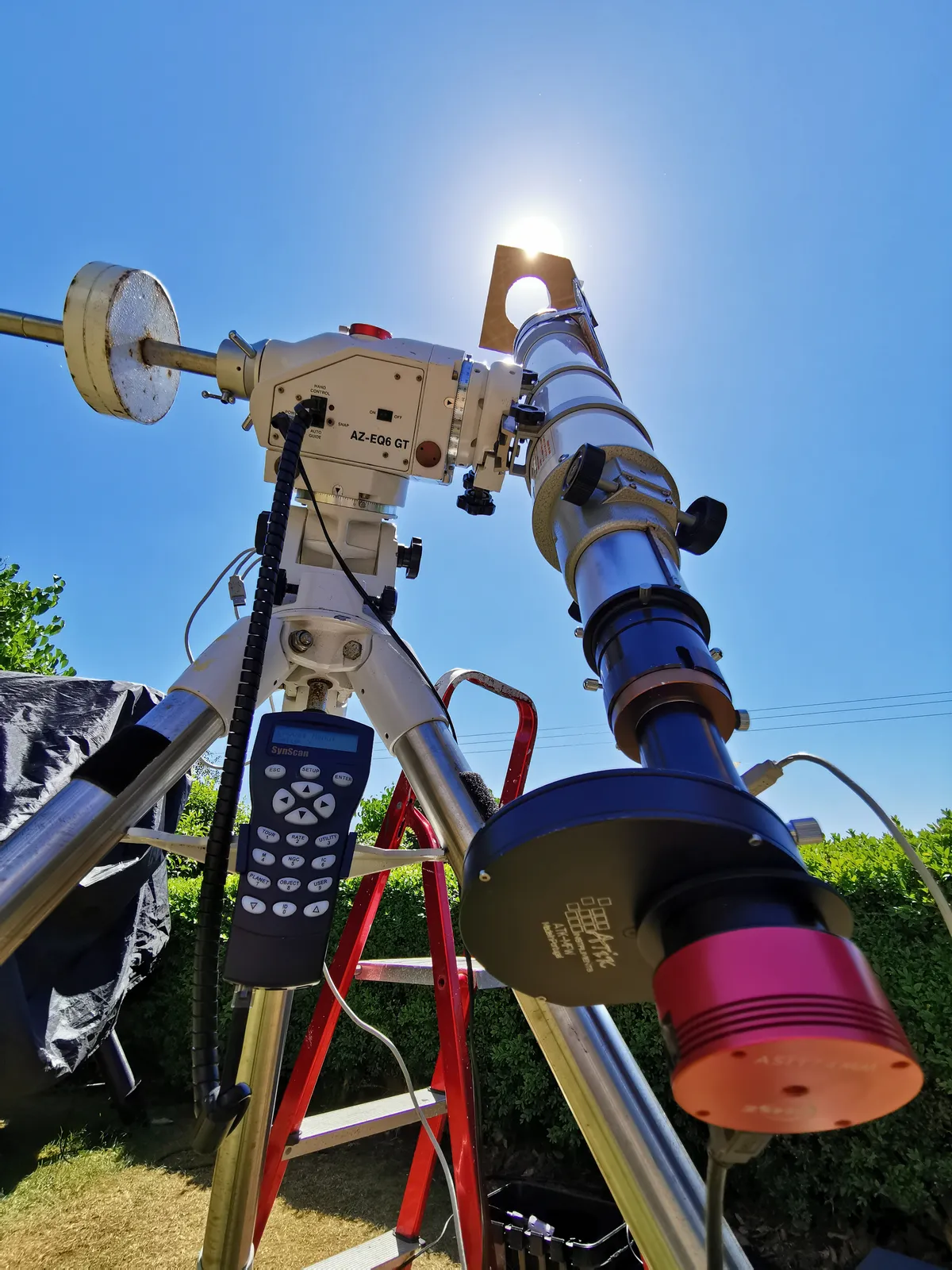
Close to the Sun…
One thing I wasn’t prepared for when imaging close to the Sun on a hot June day was the amount of pollen in the air. It was like a blizzard with the delicate crescent of a just visible Venus in the background. Even a basic view of Venus on-screen showed the highly extended cusps on 2 June. Imaging the planet was troublesome because of all that pollen lit by forward scattered sunlight. A 742nm filter helped darken the background blue sky, but contrast was very low. Early morning at 8am UT on 2 June, I managed to grab a clear sequence of 10,098 frames which, when processed, finally revealed the whole atmospheric ring I’d been after. The final monochrome IR image was combined with a colour sky shot from a DSLR to give the smooth end-result I’d been chasing since first seeing James Young’s 1964 image many years ago.
